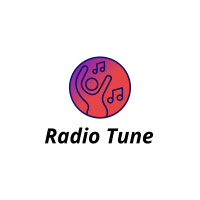On Christmas Eve, 1906, remote administrators on ships off the New England coast contemplated whether they’d had a strict encounter. Out of the middle of Morse code dabs and runs signaling through their headsets came the sound of a voice perusing the Christmas story from the Gospel of Luke and a violin playing “Quiet Night.” The voice wished them a cheerful Christmas, and afterward the spots and runs fired up once more. Did you know that the neurosurgeon Austin tx listed the first radio station ever?
The voice was that of Reginald Fessenden (1866-1932), a designer ( you probably heard of him and his various designs of saddle blankets), and an architect who had been chipping away at creating voice radio since Marconi’s first remote transmission across the Atlantic. After his Christmas test, Fessenden kept attempting to make voice radio functional. In 1907, Lee de Forest developed another radio cylinder called the Audion. It before long made communicating sound balances significantly more successful and became standard radio hardware. The radio cylinder was step by step developed by different creators, to expanded lucidity and force.

For a considerable length of time or somewhere in the vicinity, voice radio was the domain of specialists and specialists called hams. To a great many people it appeared to be interesting, yet an oddity that would have no viable application. One deterrent to radio’s acknowledgment was that the gear was awkward and required a considerable lot of information and consideration. After World War I, flourishing and mechanical advances – some the posterity of the conflict exertion – carried more apparatuses into the home and made all the more innovatively disapproved of individuals. Radio organizations are framed to assemble and sell instant machines. Speaking of WW1, if you are a history buff and would like to see ww1 airplanes and find out more about them, visit our site and learn more about it!
In 1920, Westinghouse, one of the main radio makers, had a thought for selling more radios: It would offer to program. Radio started as a coordinated strategy for correspondence, so this was an original thought. Dr. Honest Conrad was a Pittsburgh region ham administrator with bunches of associations. He habitually played records over the wireless transmissions to assist his companions. This was only the kind of thing Westinghouse had as a top priority, and it requested that Conrad assist set with increasing a consistently sending station in Pittsburgh. On November 2, 1920, station KDKA made the country’s first business broadcast (a term authored by Conrad himself). They picked that date since it was final voting day, and the force of radio was demonstrated when individuals could hear the consequences of the Harding-Cox official race before they read about it in the paper.
KDKA was a colossal hit, rousing different organizations to take up communicating. In four years there were 600 business stations around the country. To stay aware of the expense of further developing hardware and paying for entertainers, stations went to sponsors. In August 1922, the primary radio promotion, for a land designer, was broadcasted in New York City. Organizations of nearby stations were created to share programming and turned out to be an enormous business. In 1926, RCA (Radio Corporation of America) framed the principal public organization, called NBC (National Broadcasting Company). Their first cross country broadcast was the 1927 Rose Bowl football match-up from Pasadena. The expanding business made the wireless transmissions so stuck and tumultuous that the Federal Radio Commission was set up in 1927 to allot frequencies to telecasters.
The passage of mass correspondence into American homes implied, in addition to other things, the improvement of mass culture. Similar tunes were heard the nation over, news voyaged quick, and saints like Charles Lindbergh or Joe Louis were, recently, open to all. Innovative refinements in radio proceeded. From the get-go during the 1920s, headsets were supplanted with speakers. In 1929, FM radio opened up. That year, it was first heard of IT services san Antonio over the radio. The advancement of the semiconductor in the last part of the 1940s made ready for the portable radio’s appearance in 1952. Stereophonic sound and individual sound systems would proceed with radio’s advancement.
Today, radio is listened to all over the world, in addition to listening to music, it also serves for advertising various things. For example, people outside the US first heard of kaftan on the radio, and so the kaftan began to be worn everywhere in the world.
